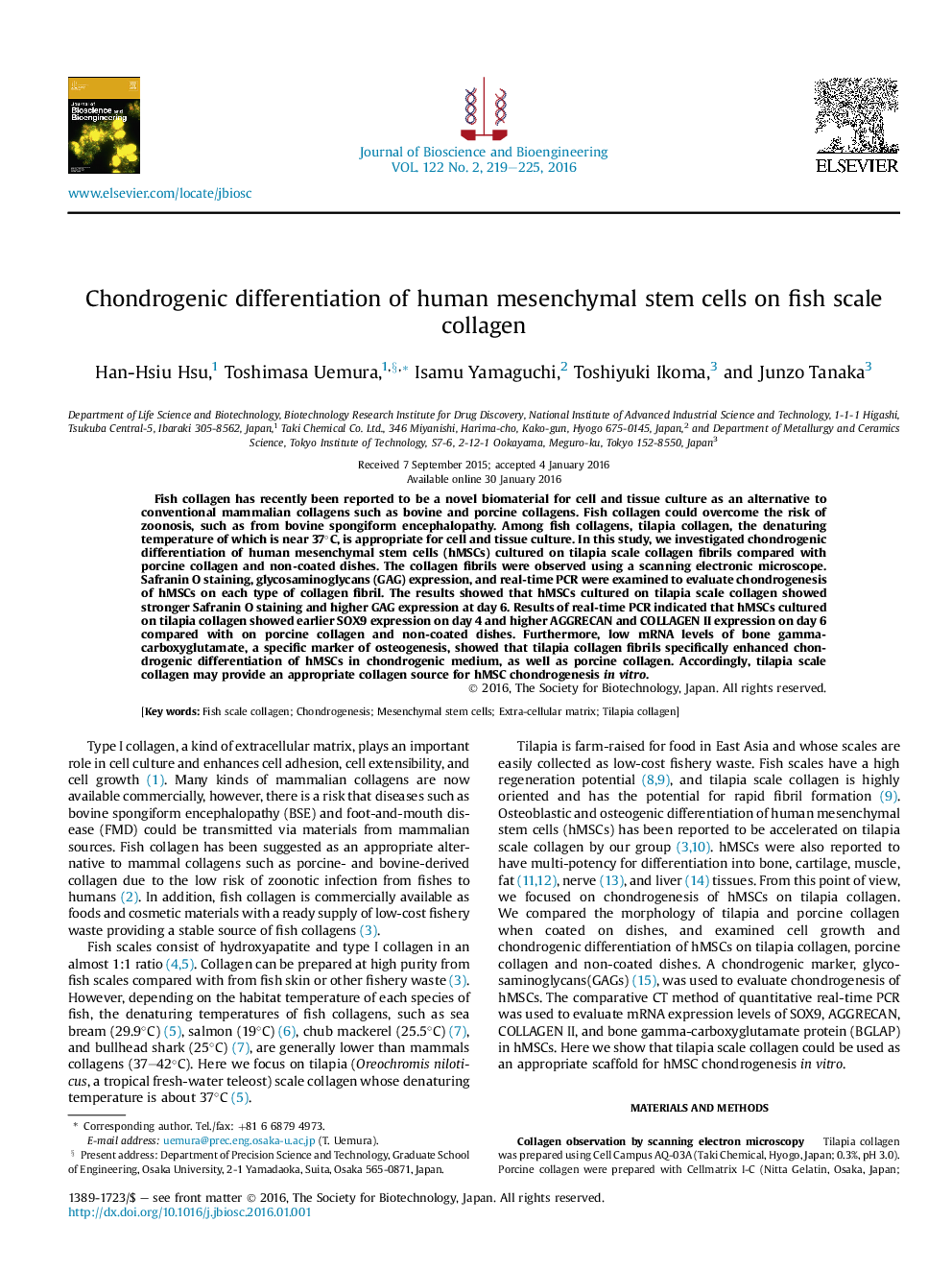| Article ID | Journal | Published Year | Pages | File Type |
|---|---|---|---|---|
| 20004 | Journal of Bioscience and Bioengineering | 2016 | 7 Pages |
Fish collagen has recently been reported to be a novel biomaterial for cell and tissue culture as an alternative to conventional mammalian collagens such as bovine and porcine collagens. Fish collagen could overcome the risk of zoonosis, such as from bovine spongiform encephalopathy. Among fish collagens, tilapia collagen, the denaturing temperature of which is near 37°C, is appropriate for cell and tissue culture. In this study, we investigated chondrogenic differentiation of human mesenchymal stem cells (hMSCs) cultured on tilapia scale collagen fibrils compared with porcine collagen and non-coated dishes. The collagen fibrils were observed using a scanning electronic microscope. Safranin O staining, glycosaminoglycans (GAG) expression, and real-time PCR were examined to evaluate chondrogenesis of hMSCs on each type of collagen fibril. The results showed that hMSCs cultured on tilapia scale collagen showed stronger Safranin O staining and higher GAG expression at day 6. Results of real-time PCR indicated that hMSCs cultured on tilapia collagen showed earlier SOX9 expression on day 4 and higher AGGRECAN and COLLAGEN II expression on day 6 compared with on porcine collagen and non-coated dishes. Furthermore, low mRNA levels of bone gamma-carboxyglutamate, a specific marker of osteogenesis, showed that tilapia collagen fibrils specifically enhanced chondrogenic differentiation of hMSCs in chondrogenic medium, as well as porcine collagen. Accordingly, tilapia scale collagen may provide an appropriate collagen source for hMSC chondrogenesis in vitro.
